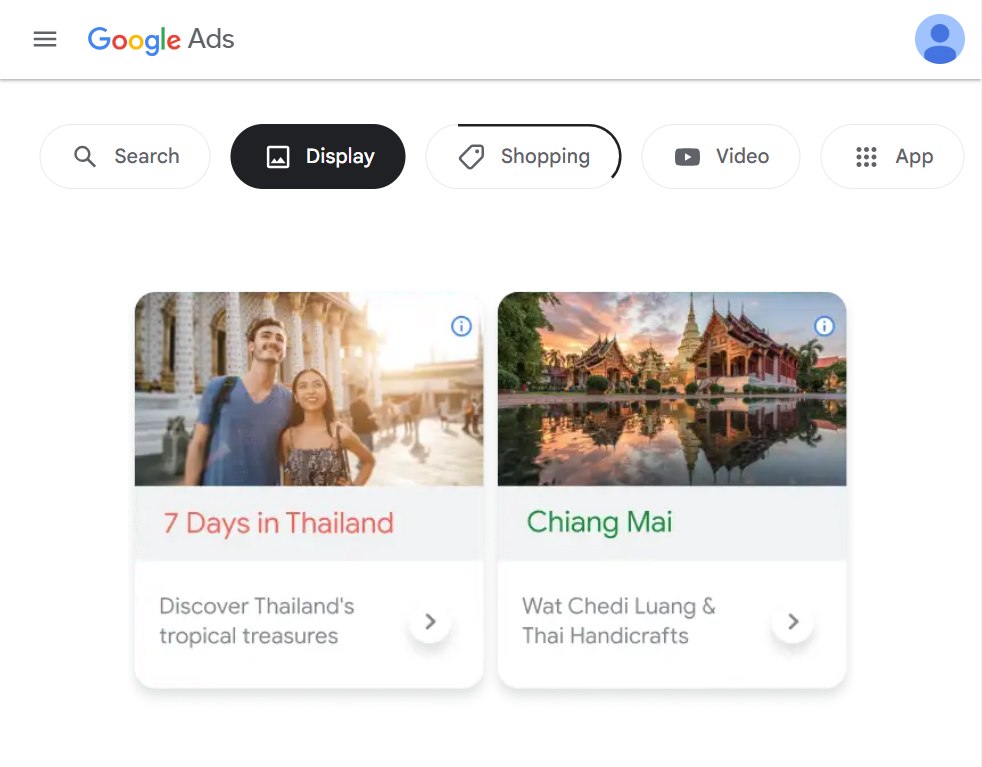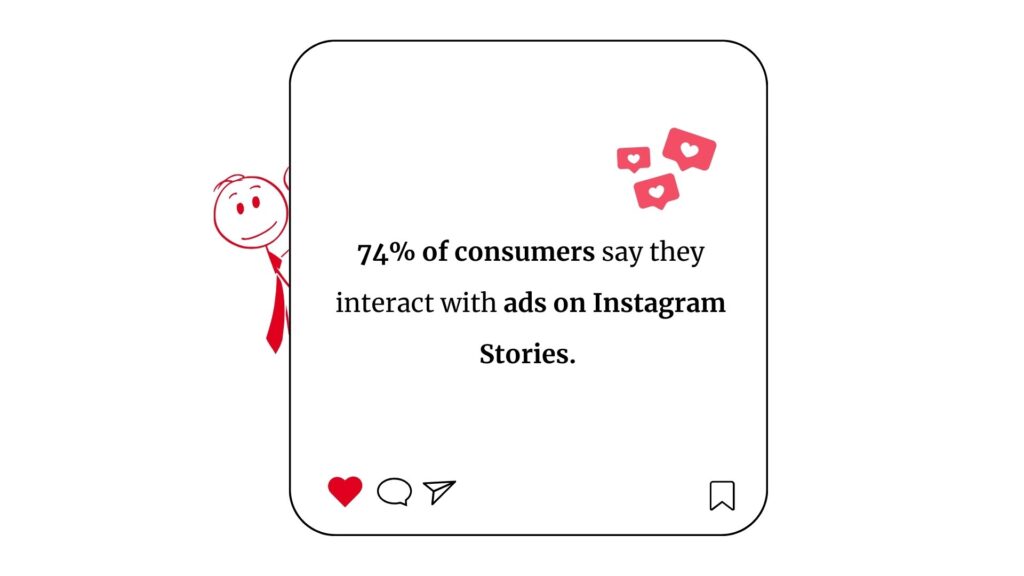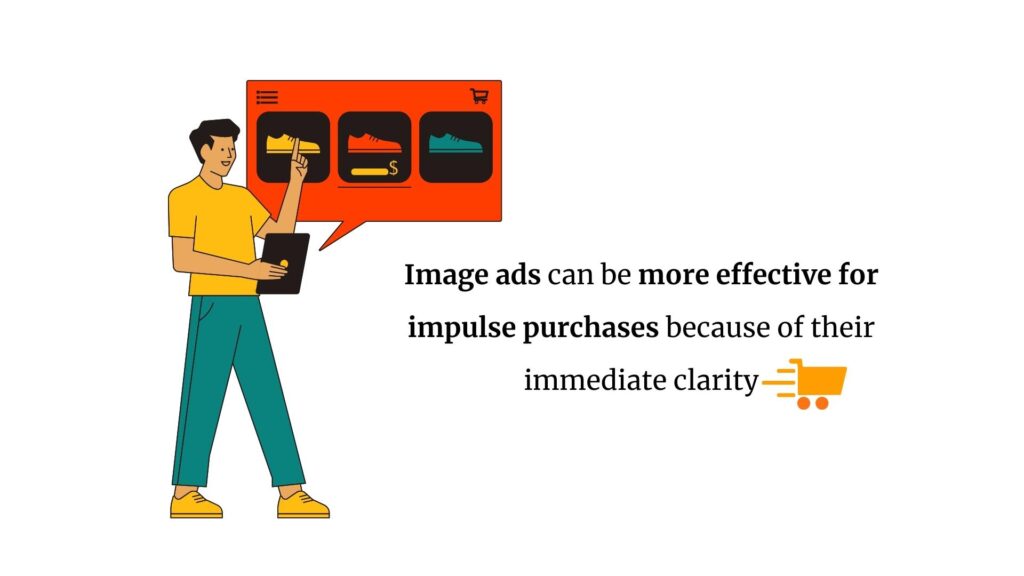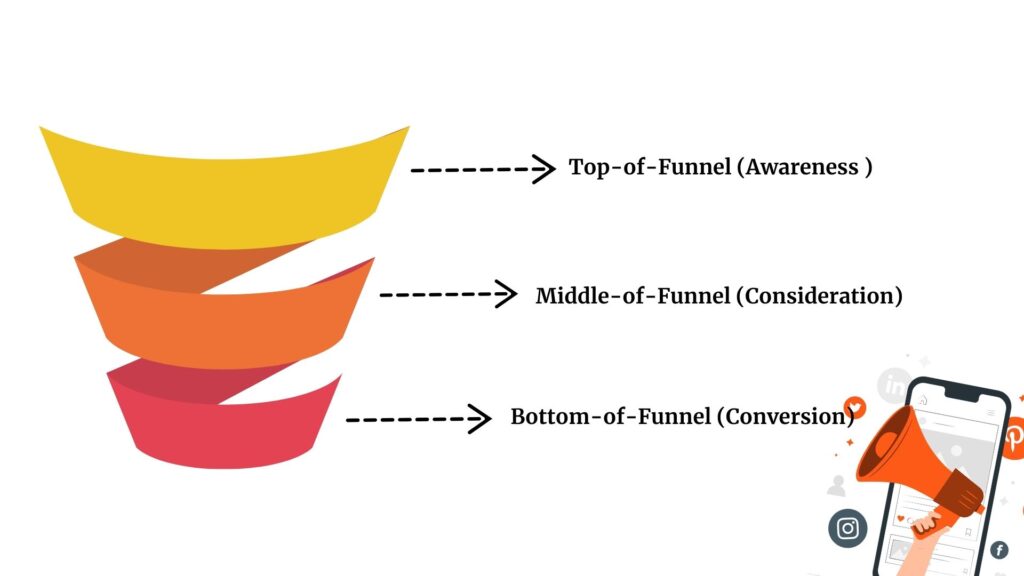Video ads or image ads? Which one catches your eye more?
According to Confect, video ads grab 24% more cost-per-purchase than image ads.
So, what are marketers really into?
Which ad format gives them the most value for their money?
Let’s find out.
| Features | Video Ads | Images Ads |
| Engagement | Higher (Video retains attention longer) | Lower (quick impression, less engagement) |
| Production Cost | Higher (require editing and sound) | Lower (simple design needed) |
| Conversion Rate | Higher (better storytelling) | Moderate (depends on design quality) |
| Best For | Brand storytelling, emotional appeal, high engagement | Quick promotions, simple messages, cost-effective advertising |
| Loading Speed | Slower (especially on mobile) | Faster (go with slower connections) |
| Platform Reach | Higher on video platforms | Works across almost all platforms |
Understanding Video Ads and Image Ads
Digital advertising is on a roll. There’s no slowing down, and it’s bringing some crazy, unexpected changes to grab people’s attention.
Two of the big hits right now are video ads and image ads. But which one has the upper hand? We are about to find out. We will go through all the layers, from basic details to proven results.
Defining Video Ads

[Image: Video ads]
What Are Video Ads?
Ads that combine visuals, motion, and audio.
These ads aren’t just still images. They have characters and voices that grab the viewers’ attention. These ads serve as highly interactive spaces. Sometimes, they tell a story or showcase products, all to drive conversion.
Where Are Video Ads Used?
You may have already seen video ads across various platforms, including:
- YouTube: The largest video-sharing platform, perfect for skippable and non-skippable ads.
- Facebook & Instagram: Supports in-feed, story, and reel video ads.
- TikTok: Short-form video ads for high engagement.
- Google Display Network: Includes video ads on partner websites and apps.
- LinkedIn & Twitter: Used for B2B marketing and short promotional clips.
4 Benefits of Video Ads
- Higher Engagement: Videos capture attention faster than static images.
- Better Storytelling: Motion and sound enhance brand messaging.
- Increased Conversions: Video ads have directly increased sales.
- Stronger Emotional Connection: Videos bring out emotions, making them more memorable.
Statistics on Video Ads
- 84% of consumers say they feel like buying a product after watching a video. (Wyzowl, 2024)
- 88% of marketers have seen better ROI from video marketing. (Firework, 2024)
- On Facebook, video ads get 135% higher organic reach than image ads. (Dojo Muscle, 2017)
- TikTok users spend 52 minutes daily, making it perfect for video ads. (Respond.io, 2024)
Defining Image Ads

[Source: Google Ads]
What Are Image Ads?
Ads that combine high-quality visuals with text.
Image ads are static advertisements. You see terrific shots, pops of color, and meaningful or bold text on the screen. It makes viewers think, and move them with just a few words. These are the ads you see across various digital platforms.
Where Are Image Ads Used?
- Facebook & Instagram: Used in-feed, carousel, and story formats.
- Google Display Network: Image-based ads appear on millions of websites.
- Pinterest: Go with lifestyle, fashion, and e-commerce ads.
- Twitter & LinkedIn: Used for professional and promotional reasons.
Benefits of Image Ads
- Easy to Produce: It requires less time and costs than video ads.
- Fast Loading Speed: This is better for mobile users with slower connections.
- Wider Platform Compatibility: Works across all major social media and display networks.
Statistics on Image Ads
- Global spending on display ads reached $207.4 billion in 2023. (Global display ad spend 2026 | Statista)
- Google Display Network reaches 90% of users with display ads. (Google Help, 2024)
Performance Showdown: Engagement and Effectiveness

[Source: 52 Surprising Statistics About Video Engagement| idomoo]
Now that we’re looking at video ads and image ads side by side, we’ll definitely go into which one gets more engagement, click-through rates (CTR), and conversion rates.
We want to help you choose the format that best suits your specific goals.
Let’s break it down for you.
Engagement Metrics
Engagement refers to actions, such as:
- Views
- Likes
- Comments
- Shares
These are the metrics that meta ads, Instagram ads, or any other platforms see as interactions. They show that viewers are coming and going while engaging. In this case, video ads get more attention.
Reason video ads outperform image ads in this area because:
- Capture attention with motion and sound.
- Gripping storytelling element that keeps users watching.
- Encourage more interactions through autoplay features.
Statistics on Video Ad Engagement:
- Video ads receive 6 times more engagement than image ads. [Source: easyInsights, 2023]
- Video ads collect 612% more likes and comments than image ads. [Source: Confect.io, 2023]
- Instagram carousel ads engage 1.92% better than images. [Source: notta, 2024]
📌 Key Takeaway: If engagement (likes, comments, shares) is your target, video ads are the better choice.
Click-Through Rates (CTR)
As you know, CTR shows how many users are clicking on your ad after viewing it. Even though video ads get more attention, image ads can sometimes act better in CTR. All the credit goes to its simplicity and direct messaging.
CTR Performance Comparison:
- Image ads had a 7% higher CTR compared to video ads in particular campaigns. [Source: AdzyGo, 2024]
- Product image ads have a 20% higher CTR for e-commerce brands. [Source: Welpix, 2025]
- Compared to traditional ads, interactive video ads can increase CTR by 11-20 times. [Source: Firework, 2024]
📌 Key Takeaway: Image ads can often grab more clicks with direct-response campaigns. Using interactive, polished video ads boosts click-through rates!
Conversion Rates
Here comes the conversion rate. This indicates how many people actually take the initiative to act (purchase, sign up, download) after clicking an ad. Compared to image ads, video ads have been observed to increase conversions through their strong emotional connection.
Conversion Rate Performance:
- Video ads lead to a 47% higher cost-per-purchase than image ads. [Source: Confect.io, 2023]
- Video landing pages boost conversions by 86% over static images. [Source: Hubspot, 2025]
- Video ads on iOS apps have seen a 14.3% conversion rate. [Source: Statista, 2024]
📌 Key Takeaway: Video ads make everything feel more engaging, which can boost sales—especially for brands that want to educate people or earn their trust.
Which Should You Use?
- For brand awareness & engagement → 🎥 Video Ads
- For direct response & quick clicks → 📸 Image Ads
- For maximizing conversions → 🎥 Video Ads
Relatable Reads: Short-Form vs. Long-Form Video: Which Drives Better Results for Your Business? – LocalEyes
Cost Analysis: Budgeting for Video and Image Ads
There is a reason to bring cost into the middle of the discussion.
Businesses will consider advertising budgeting first. So, they will compare production and advertising costs to decide which format seems most cost-effective.
What we have found is that video advertising costs more upfront.
However, it can return higher engagement and conversion rates in the long run.
Production Costs: Video Ads vs. Image Ads
Creating a video ad requires multiple production elements, including:
- Scripting & Storyboarding: Writing a compelling narrative.
- Filming: Hiring actors, equipment, and locations.
- Editing & Post-Production: Adding effects, sound, and refinements.
In contrast, image ads are simpler and require fewer resources:
- Graphic Design: Using tools like Canva, Photoshop, or AI-generated visuals.
- Stock Images or Product Photos: Quick and cost-effective for digital ads.
Average Production Costs
| Cost Factor | Video Ads | Image Ads |
| Scripting & Planning | $500 – $5,000 | $50 – $500 |
| Shooting & Editing | $700 – $10,000+ | $100 – $1000 |
| Freelancer/Agency Fees | $1,500 – $20,000 | $100 – $2,000 |
| Total Estimated Cost | $2,000 – $50,000+ | $200 – $5,000 |
Note: These ranges can fluctuate depending on the project’s complexity and where you are located.
📌 Key Insight: Video ads will make you spend 5- 10x more than image ads. That’s why video ads are said to be less feasible for small businesses with limited budgets.
Advertising Spend: Cost per Click (CPC) & Cost per Purchase (CPP)
Beyond production, businesses also take care of the ad spend on platforms like Facebook, Google, and TikTok.
- Video Ads: It has higher engagement but a 24% higher cost per purchase than image ads. [Source: Confect.io, 2023]
- Image Ads: The CPC for running image ads is much lower than for video ads. [Source: Business of Apps, 2025]
Average Advertising Costs
| Cost Metric | Video Ads | Image Ads |
| Cost Per Click (CPC) | $1.50 – $3.00 | $0.60 – $2.00 |
| Cost Per Purchase (CPP) | 24% higher than image ads | More cost-effective for quick conversions |
| Cost Per Lead (CPL) | $20 – $150 | $10 – $80 |
📌 Key Insight: If you want to bag immediate sales at a lower cost, image ads should be your option.
Platform-Specific Insights: Facebook, TikTok
The reason we are bringing up Facebook and TikTok in this debate is that they’ve both done a great job with ads. Plus, they managed to attract a huge audience.

Every platform has its own way of engaging users, along with different ad styles and performance standards.
As we said, what you want to achieve with your campaign can really impact whether video ads or image ads get more attention.
Facebook Ads: Video vs. Image Ads Debate
Facebook is still one of the biggest advertising spots. They use video and image ads in places like News Feed, Stories, Reels, and Marketplace. However, marketers have had different experiences when it comes to which format actually works better.
Performance Insights from Studies & Reddit Discussions
- Video ads receive 38% more engagement than image ads. [Source: Promo.com, 2019]
- A Reddit thread on Facebook Ads ROI shows that some marketers prefer static image ads for direct response campaigns, especially in e-commerce.
- A Quora study found that 95% of marketers saw higher engagement with video ads than image ads, while only 25% discussed image ads. [Source: Do Facebook users engage more with video ads or static image ads? – Quora]
- Video ads see 135% higher engagement rates, but image ads can convert better for impulse purchases due to their immediate clarity. [Source: Billo, 2024]
📌 Key Takeaways for Facebook Ads:
Use video ads:
- Brand awareness
- Storytelling
- Engagement-driven campaigns
Use image ads:
- Quick conversions
- Product-focused promotions
- Lower-budget campaigns
TikTok Ads: The Power of Short-Form Video
TikTok is all about those short, fun videos. So video ads really take the spotlight on the platform. Unlike Facebook, where you can still see a bunch of image ads, TikTok doesn’t really vibe with that—video is where it’s at!
TikTok Video Ads Performance
- 23% of TikTok users recall brands from the platform over traditional ads. [Source: Marketingmavrick.io, 2024]
- Brands using TikTok video ads with a creator partnership saw an 83% higher engagement rate. [Source: The Drum, 2022]
Best Practices for TikTok Video Ads:
- Keep it short: 9-15 seconds works best.
- Make it authentic: Users prefer ads that feel like organic content.
- Use trends & sounds: Using popular audio increases engagement.
📌 Key Takeaway: TikTok is a video-first platform, so video ads are the best option for engagement and conversions.
Strategic Applications: When to Use Video Ads vs. Image Ads
Deciding whether to use video ads or image ads really comes down to where your customer is in the buying process. A good strategy taps into both types of ads at the right times to get the best results.

Top-of-Funnel (Awareness Stage): Use Video Ads
At the awareness stage, your target is to capture attention, tell a story, and build brand recognition.
Video ads come in handy because they:
- Engage viewers with dynamic visuals and sound.
- Deliver complex messages quickly and memorably.
- Increased brand recall is important for long-term customer relationships.
Data-Backed Insights on Video Ads for Awareness:
- Audiences are 17% more likely to purchase the product after viewing video ads compared to static image ads. [Source: Wyzowl, 2024]
- Video content is shared 12 times more than text and images. [Source: Vidico, 2024]
📌 Best Platforms for Awareness-Stage Video Ads: Facebook, TikTok, YouTube, Instagram Reels.
Bottom-of-Funnel (Conversion Stage): Use Image Ads
At the conversion stage, potential buyers are ready to take action. Here, ads need to be clear, direct, and optimized for clicks.
Image ads are often more effective here because they:
- Load faster and deliver a direct message in one glance.
- Are cost-effective compared to video ads.
- Work well for impulse purchases in e-commerce.
Data Supporting Image Ads for Conversions:
- VR, AR, and 3D images achieved a 94% average conversion lift. [Source: Photoroom, 2023]
- Human images can boost landing page conversions by as much as 45%. [Source: Growbo]
- Retargeted users are 70% more likely to convert with a clear product image than with a video. [Source: Remarketing: the Ultimate Guide – GrowthBadger]
📌 Best Platforms for Conversion-Focused Image Ads: Facebook, Instagram, Google Display Network, Reddit.
Check out Video Marketing Funnel: What It Is & How It Works (2025) – LocalEyes
Retargeting Campaigns: Video & Image Ads Work Together
Retargeting campaigns re-engage users. It means users who have interacted with a brand but didn’t convert.
Both video and image ads play a role:
- Video ads enhance brand messaging and engagement.
- Image ads create urgency and improve last-click conversions.
Retargeting Performance Insights:
- Video advertisements boost purchase intent by 20% compared to static image ads. [Source: Cropink, 2025]
- Retargeting campaigns outperform standard display ads by 10x ads. [Source: WebFx, 2024]
📌 Best Strategy: Start with video retargeting ads to enhance engagement, then follow up with image ads to finalize the sale.
Final Strategy Guide: Choosing the Right Ad Format
| Funnel Stage | Best Ad Type | Reason |
| Top-of-Funnel | → 🎥 Video Ads | → Higher engagement → Brand recall → Storytelling potential |
| Middle-of-Funnel | → 🎥 Video Ads → 📸 Image Ads | → Video for engagement → Image for direct response |
| Bottom-of-Funnel | → 📸 Image Ads | → Lower cost per purchase → Higher click-through rates |
| Retargeting | → 🎥 Video → 📸 Image Ads | → Video for re-engagement → Image for final conversions |
Crafting Compelling Ads: Best Practices
Coming up with an ad idea isn’t a walk in the park. You’ve gotta think strategically about design, messaging, and format. Whether you’re using video or images, the key is to grab people’s attention with your ad.
Best Practices for Video Ads
Keep It Short and Engaging (Under 60 Seconds)
- Shorter videos have a 2.5 times higher engagement rate than longer ones. [Source: Firework,2024]
- The first 3 seconds decide: hook viewers quickly!
🔹 Pro Tip: Start with a bold statement, question, or eye-catching visual.
Show the Product or Brand Message Immediately
- Brand mentions in the first 5 seconds boost ad recall. [Source: Think with Google]
- Put the key message first; viewers scroll away quickly.
🔹 Pro Tip: Use captions—85% of Facebook videos are watched without sound. [Source: Instapage]
Optimize for Mobile & Vertical Formats
- Over 62% of YouTube video ad views come from mobile devices. [Source: Sixth City Marketing]
- Vertical videos have 28.5% more reactions than landscape formats. [Source: Covideo, 2018]
🔹 Pro Tip: Use bold visuals and quick cuts to engage viewers.
Best Practices for Image Ads
Use High-Quality, Eye-Catching Visuals
- 67% of people say high-quality image ads have more engagement. (Zoe Marketing & Communications, 2022)
- Cluttered images diminish trust; sharp visuals are essential.
🔹 Pro Tip: Avoid generic stock images; use real products, user-generated content, or branded graphics.
Keep Copy Concise and Clear
- Ads with 3-5 words in the headline get more clicks than longer text. (Google Help, 2021)
- Emphasize benefits over features—people want to know what’s in it for them.
🔹 Pro Tip: Use power words like free, exclusive, now, and limited-time to create urgency.
Use Bold Colors and Strong Contrast
- Bright, contrasting colors increase ad visibility.
- Avoid dull, muted tones that blend into the feed—make your ad pop.
🔹 Pro Tip: Test different color schemes and track performance to find what works best.
Frequently Asked Questions
Video ads catch your eye with fun stories, while display ads serve as visual cues to support brand messages.
17% of audiences are more likely to purchase a product or service after viewing a video advertisement.
The popular and commonly used video ads are bumper, skippable, masthead, pre-roll, and native ads.
Video ads get 25% more impressions than static ads. That means static ads aren’t as effective as video ads

Executive Producer at LocalEyes Video Production | Emmy Award Winning Producer



